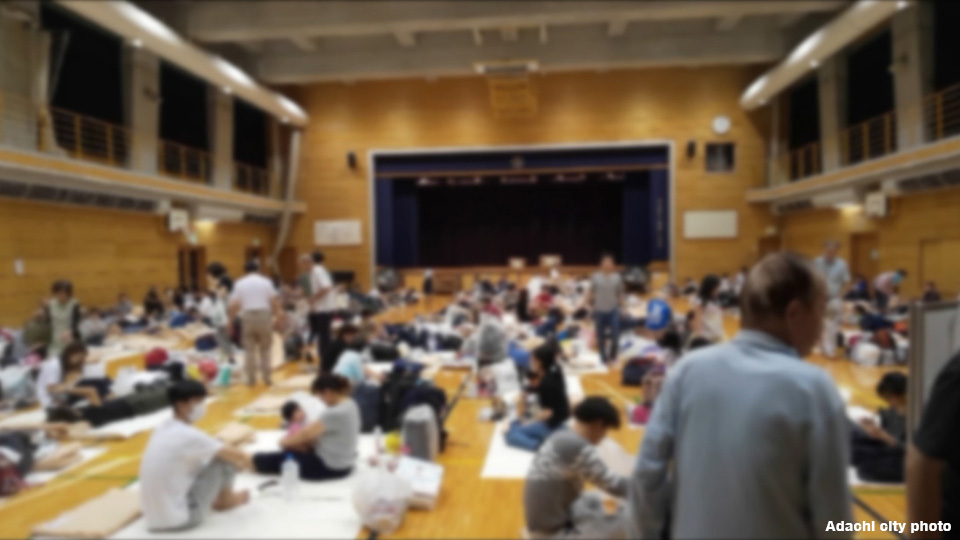Adachi City in northern Tokyo is home to nearly 700,000 people. It is surrounded by rivers and is considered a high-risk area for flooding. Last year, as Typhoon Hagibis bore down on the Tokyo region, all Adachi residents were asked to evacuate. Fortunately, the city was spared of any damage.
This year, Adachi is struggling to balance typhoon preparation with the challenges of the coronavirus
The city has come up with a number of ways to mitigate the risk of infection, including stockpiling disinfectant and preparing about 2,000 face masks for each evacuation center. Officials will also screen the temperatures of evacuees at the entrances to each shelter. Those with fevers will be housed separately.
Experts have also been recommending that shelters make about 4 square meters of space available for every evacuee. However, for Adachi, such a measure would make it possible to only house a fraction of the city’s total residents. To increase capacity, officials have been working to secure vacant rooms at government-managed housing sites.
They’ve also been recruiting local businesses to lend a hand. So far, Adachi officials have identified five large-scale facilities, including hotels and stores, as potential emergency shelters. The city is also recommending that residents arrange plans to stay with relatives or friends who live in lower-risk areas. They also urge residents whose homes are high enough to evacuate to top floors instead of seeking shelter elsewhere.
“Residents need to be aware that shelters will get quite crowded,” says Aida Yasuyuki, the Director of the Disaster Measures Section for Adachi City. “So it’s important that they know how and where to evacuate.”

Many cities across the Tokyo metropolitan area are grappling with similar problems. NHK examined data released by the 21 municipalities located in the Tama River basin. 1.65 million people live in areas that are deemed to be at high risk of flooding. Local evacuation centers can only hold about 880,000 of these people, or about 53%.
Furthermore, when these figures are adjusted to give every evacuee 4 square meters of space, capacity drops to around 400,000, or about 24% of the population in high-risk areas.
Evacuation preparation
Matsuo Ichiro, a visiting professor at the University of Tokyo, recommends that residents of high-risk areas include items to prevent coronavirus infection in their evacuation kits.
These include:
- Masks
- Alcohol-based disinfectant
- Soap (for personal or family use; not to be shared with other people in the shelter.)
- Disposable plastic bags (to handle doorknobs and other surfaces that are touched by lots of people)
- Thermometers
- Indoor shoes or slippers
Matsuo says natural disasters will not wait until the pandemic subsides to strike. Given such a difficult situation, local governments and residents alike will have to prepare for the worst and hope for the best.

